Of Black Flies and Bog Fritillaries
They dart and flutter across squishy carpets of leatherleaf and sphagnum, among gaudy purple blooms of rhodora and bog laurel. Their life in flight at northern bogs around the world is all too brief: just a few weeks on the wing. But when you time your visit just right, about when the black flies and mosquitoes and deer flies unite to defend these bogs from the likes of you, there is nothing better on earth than Bog Fritillaries.
Bog Fritillaries (Boloria eunomia) made me forget the clouds of biting insects on Monday. (Well, okay, almost.) During my 3.25 hours on the bog, I had 47 encounters with Bog Fritillary, perhaps representing half that many individuals. Even one would have been enough. And I would have borne far worse than biting insects to see it.
Most of the time the fritillaries did not stop and pose for me. Few paused to nectar on the paper-white flowers of Labrador Tea (Ledum groenlandicum). Most on the bog that day were probably males patrolling for females, which were not yet on the wing in any significant numbers. And this was a problem for me (even though I have a rule: no complaining on a bog … ever).
Among my objectives, besides bliss, was to photograph these lovely insects for an upcoming atlas to butterflies of Maine and the Canadian Maritimes. So in order to find one posing, ready for his close-up, I watched for a male new to the world, freshly emerged from his chrysalis, and still gathering himself before joining the others in active flight. At long last, after about Fritillary Encounter Number 40 or so, there he was, resting on a well-worn leatherleaf shrub (Chamaedaphne calyculata) at precisely 12:39PM.
The fritillary and I spent the next one hour and three minutes together. I photographed him on the leatherleaf, and when he dropped to the Sphagnum on the bog mat I photographed him there as well. When he flew sluggishly to another leatherleaf, I caught up with and photographed him there. Onward to perches on Labrador tea, blueberry (Vaccinium sp.), black spruce (Picea mariana), with me and my camera in gentle pursuit. And finally, as he rested on a leaf of wild raisin (Viburnum cassinoides), I photographed him one more time — at 1:42PM.
And then — after 63 minutes of bliss and a moment of wistfulness — we parted ways.
I do not recall ever walking away from a Bog Fritillary; I would no sooner walk away from someone I love. Even so, to spend an hour with one butterfly going about his business on a bog, well, I can think of few better hours to spend during the month of June.
My pal Josh would agree. He joined me on the bog that day. And even though I have spent some of my best moments alive alone on bogs, it was nice to have a friend there to share the experience. So in my iPhone image above, you’ll see our cooperative Bog Fritillary posing for photos, and yet another happy guy with his big camera lens.
I do not recall ever walking away from a Bog Fritillary; I would no sooner walk away from someone I love.
By the way, this brand of fritillary, in the genus Boloria, offers us diversity and opportunity for grand adventure. Yes, you will find other Boloria species flying right now near you — a few members of this genus are cosmopolitain. But some of the rarest and most prized butterflies of temperate and boreal zones, of bogs and mountain summits, are Boloria fritillaries. I have chased them far afield, including sites farther north in Maine and above the Arctic Circle.
And I will continue to chase them for as long as I am able, including another trip to Maine’s northern border next month for photos of the exceedingly rare Arctic Fritillary (Boloria chariclea). You’ll see one below, from a bog in Minnesota, along with various other Boloria fritillaries, which are most distinctive when they fold their wings to reveal their elaborate underside patterns.
To be sure, these images might seem to be little more than a pastiche of orange-and-black butterflies. It is that. But it is more than that. Each is an orange-and-black experience, evoking for me places wilder and more remote than where I now reside and write — and places still even wilder and much farther north yet to discover.
Such is the gravitational pull of a butterfly — a force of nature in orange and black and only a few beats of gossamer wings.
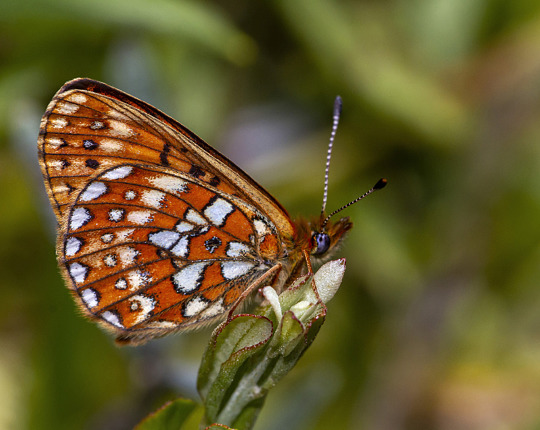
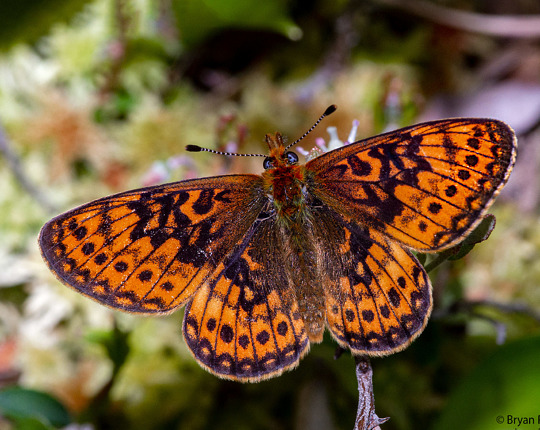

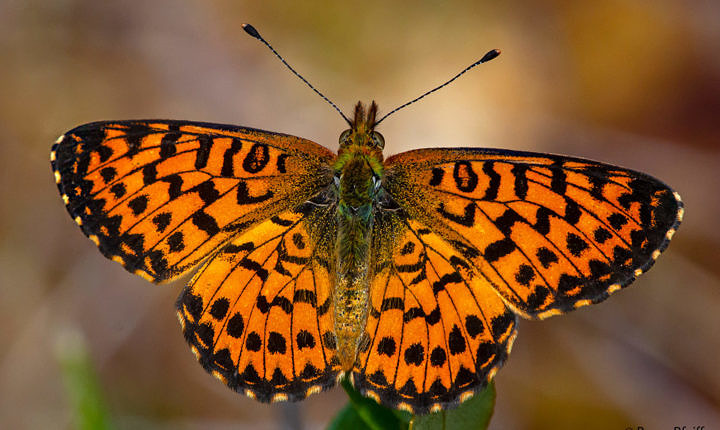

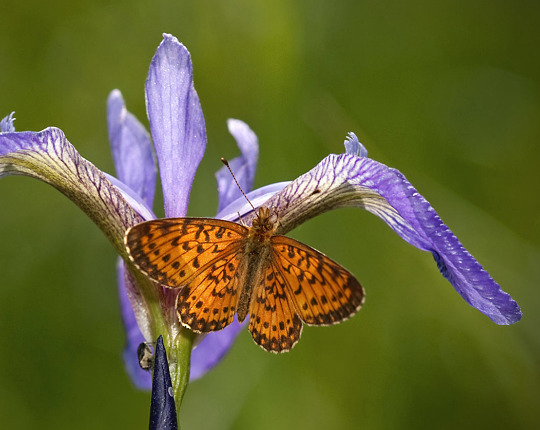
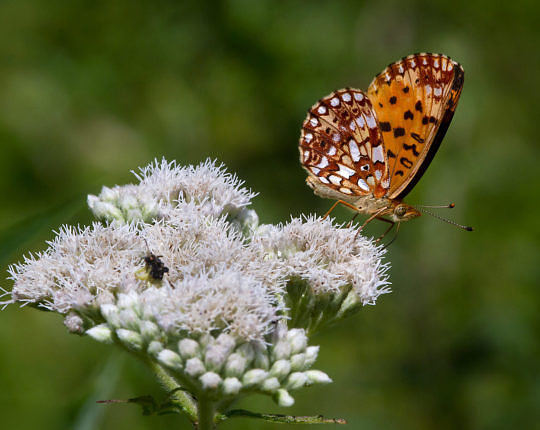


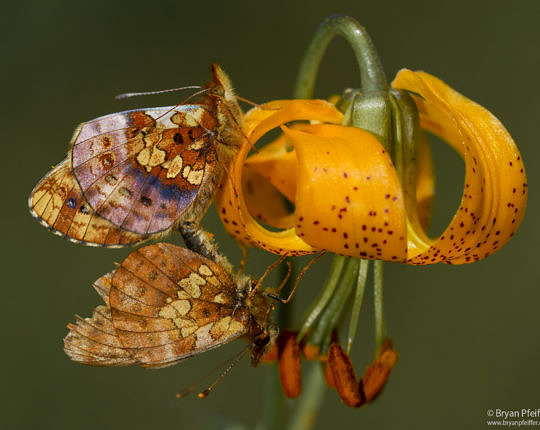
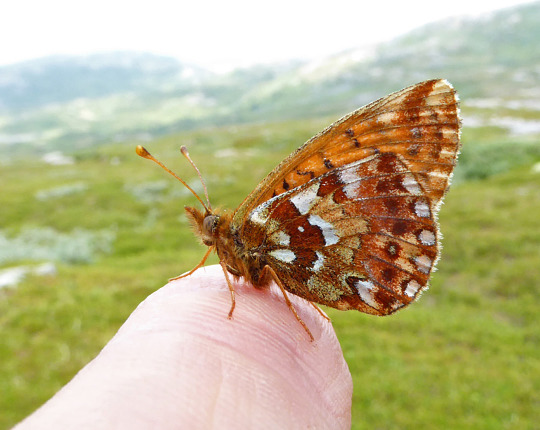

Bogs and fens are magical places. The unique flora, the odes and leps keep me on overload – I live mostly in Ohio, very few bogs / fens ( very small also ).
A blog on Ebony Boghaunters is in order. Maybe not so pretty, but certainly with similar allure.
Bryan,
If you have a great photo, I’d give it a go with a painting!
You’re right, Carol. Black and orange, as it turns out, is a bit of a disservice. The undersides of lots of butterflies offer us shocking and subtle colors and patterns alike.
You know, Fred, the solstice hadn’t occurred to me. So, yes, let there be even more light for these insects!
Thanks, Barbara. Yes, actually, I think we all can enjoy our local fritillaries in the same way — and without all the biting insects.
How nice of you. Thanks, Linda. Send my best to the breakfast group!
Thanks, Pat. Yes, indeed — I get wet on hands and knees in those bogs. The only way to be in there!
I hope to add more to the gallery. Thanks, Veer!
Very kind of you, Linda. Thanks. Best to you and Nicola!
Thanks, Joyce. Ah, how nice it would be to see that bog landscape painted on canvas!
Hi Alan, Very good question. The taxonomy on those particular fritillaries has been “in flux” a bit. You’re essentially correct, but “the authorities” are calling your bug a subspecies: Boloria chariclea montinus, rather than awarding it full species status.
Thanks, Terry. Sorry I missed you at breakfast. I’m chasing rocks all weekend in a Vermont geology seminar. 🙂
They’d make you forget the insects to swat! (Well, sort of.) 🙂
As it turns out, I also photographed a pair of copulating Ebony Boghaunters among the frits!
Thanks, Judy. These winged wonders are keeping from my mollusk adventures!
Thanks, Charlotte. That means a lot to me.
Your blog so often reminds me that you are a writer first (e.g., to nectar). The photos are splashy, the writing a real pleasure.
What beautiful details on these winged wonders. Thank you for stunning photos and heartfelt essay.
A felllow Boghaunter
Wow the photos are beautiful. Makes me want to swat insects to see these lovely creatures.
Lovely, Bryan. This one was indeed beautiful–the essay, I mean. And the butterfly was no slouch either.
Beautiful images of the fritillaries. Glad to see you were here in Minnesota. My “Butterflies of the Northwoods” guide shows that we have the purplish fritillary (Boloria montinus) which, according to the author, has been “split from the more northerly Arctic fritillary (Boloria chariclea)”. Do we have both here in Minnesota?
Such beautiful, poetic prose from the heart, Bryan. I vicariously joined you without suffering from black fly swarms. But I couldn’t share the thrill. Photos are great.
This made my heart open. Thank you Bryan.
A masterclass on Fritillaries in your gallery, thank you!
Beautiful essay! I felt as though I was right there with you, on my wet hands and knees, looking at these beauties. Thanks for a wonderful virtual field trip!
Thanks, lovely essay.
Wonderful, Bryan! I know just how you feel!
A wonderful post on the first day of summer.
It’s hard to believe the combinations of colors,….yet all perfectly outlined and different .I noticed that most of these species you have shown are all in the brown,tan and even light grey tones and patterns ….